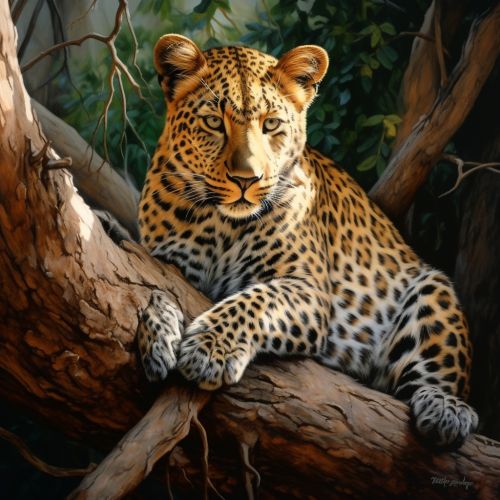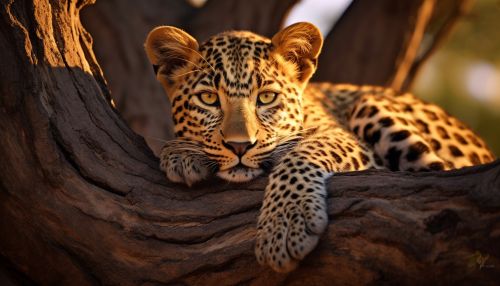Leopard
Taxonomy and Evolution
The leopard (Panthera pardus) is a member of the Felidae family, and one of the five extant species in the genus Panthera. The leopard was first described by the Swedish zoologist Carl Linnaeus in the 10th edition of his Systema Naturae in 1758. The leopard's lineage diverged from the other Panthera species around 6.37 million years ago and fully separated about 3.1 to 1.95 million years ago.


Description and Characteristics
Leopards are distinguished by their well-camouflaged fur, opportunistic hunting behavior, and strength (which enables them to carry heavy carcasses up trees). They have a large skull and powerful jaw muscles that allow them to take down and consume a variety of prey. The leopard's coat is short and sleek, with a base color that varies from the pale yellow of desert populations to the dark gold of rainforest dwellers. Their bodies are covered in rosettes, which provide excellent camouflage in various habitats.
Distribution and Habitat
Leopards have the broadest distribution of any wild cat, ranging from sub-Saharan Africa to the Russian Far East. They inhabit a wide variety of habitats within this range, including both deserts and rainforests. Leopards are highly adaptable and can thrive in both warm and cold climates, but they are primarily found in grasslands, woodlands, and riverine forests.
Behavior and Ecology
Leopards are solitary animals with exceptional predatory skills, including the ability to climb, swim, and drag heavy carcasses up trees. They are primarily nocturnal and spend the daytime hours resting in thick brush or in the branches of trees. Leopards are known for their ability to adapt, including in human-impacted landscapes. Despite their adaptability, leopards face threats from habitat loss and fragmentation, and they are listed as Vulnerable on the IUCN Red List.
Reproduction and Life Cycle
Female leopards give birth to a litter of two or three cubs after a gestation period of approximately 90–105 days. The cubs are born blind and gain sight after two weeks. They remain hidden for eight weeks before following their mother on hunts. The life span of a leopard is between 12 and 17 years in the wild, and up to 23 years in captivity.
Leopards and Humans
Throughout history, leopards have been admired for their strength and beauty, but they have also been feared as threats to livestock and humans. Leopards have been hunted for their skins, and their body parts are used in traditional Asian medicine. They are also victims of habitat loss due to human activity. Conservation efforts are in place to protect leopard populations and ensure their survival in the wild.
